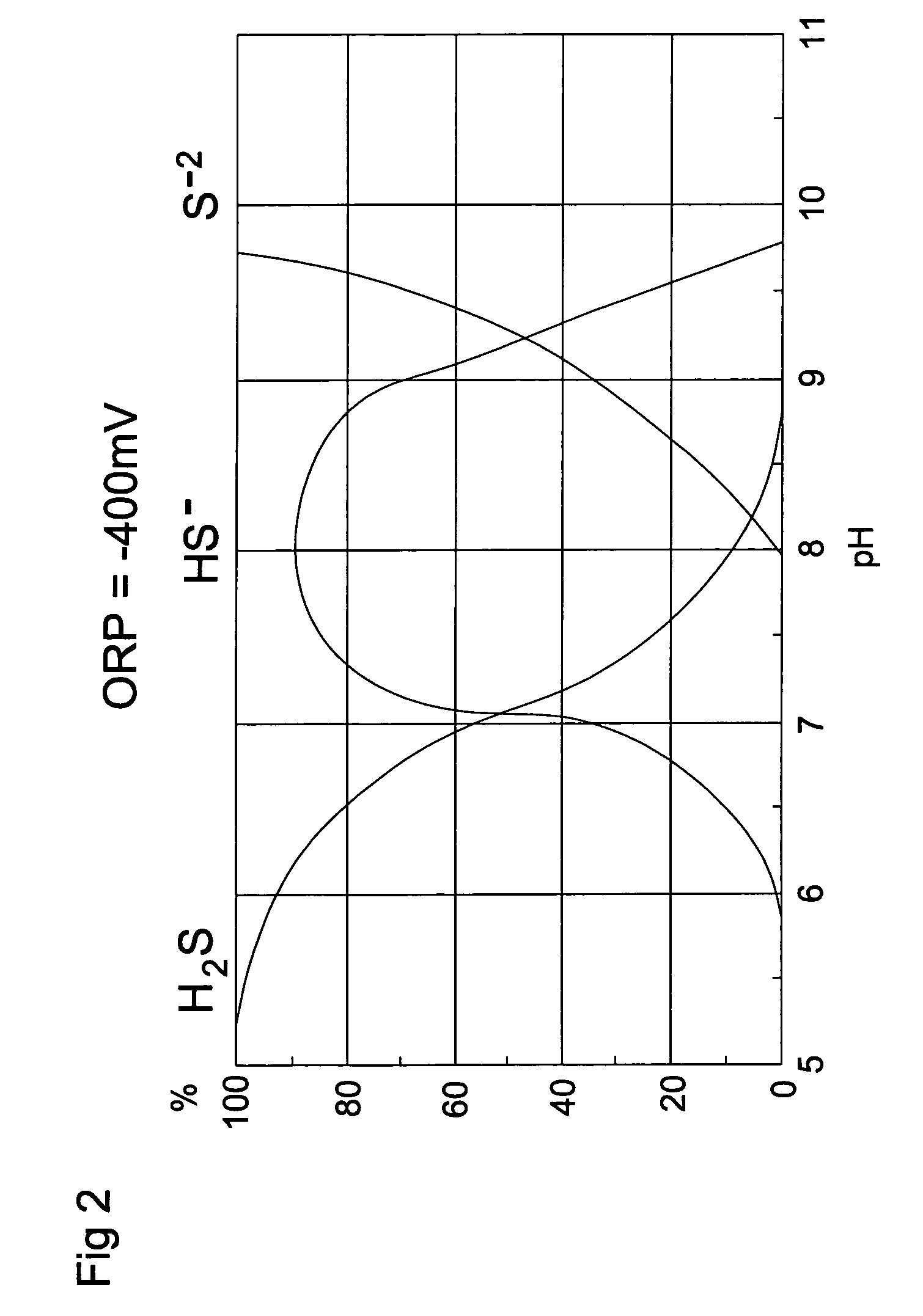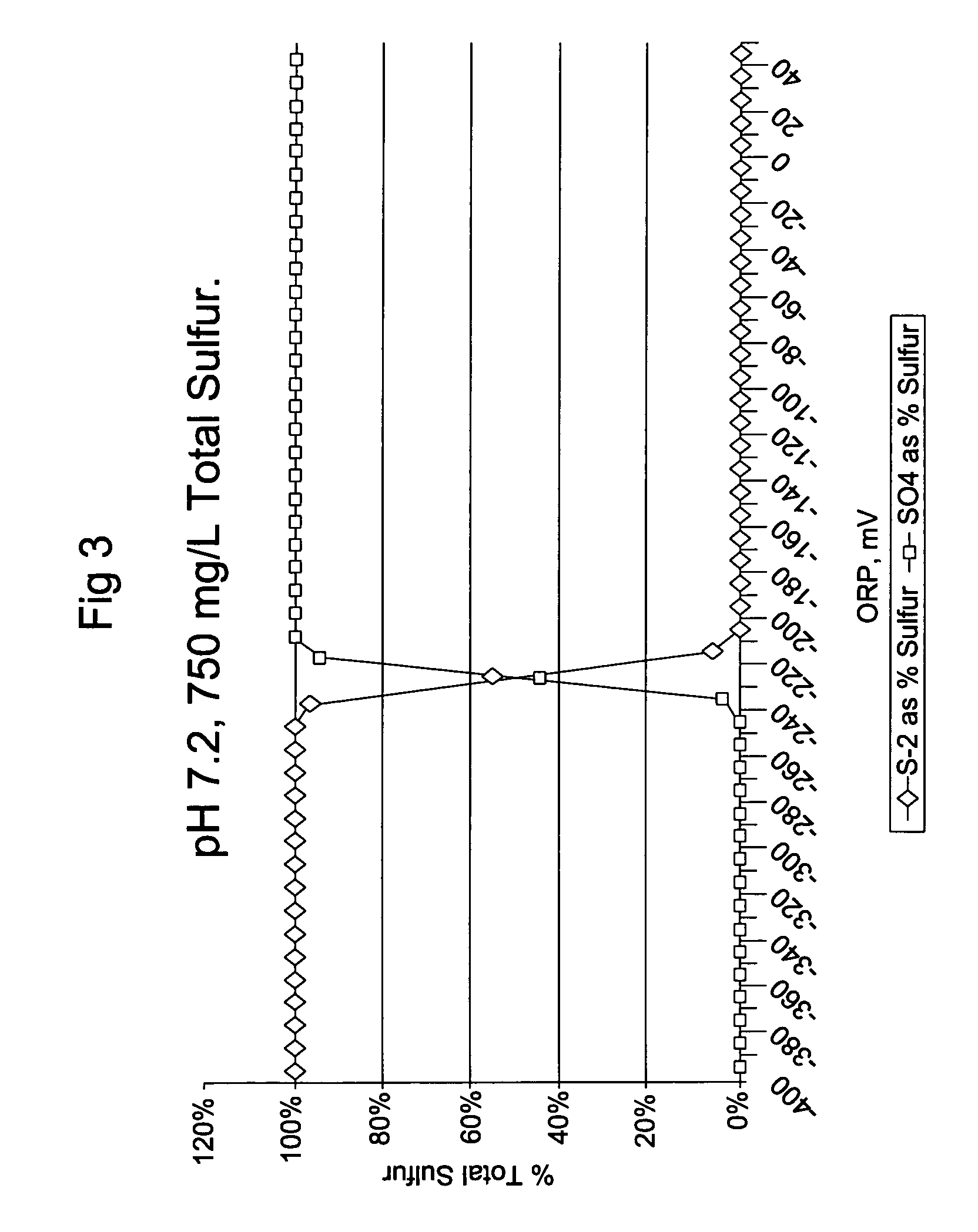Odor control
a technology for odor control and wastewater treatment, applied in the direction of water treatment parameter control, biological water/sewage treatment, disinfection, etc., can solve problems such as unfavorable sulfate reduction conditions, and achieve the effect of reducing or eliminating odors in wastewater treatment plants
- Summary
- Abstract
- Description
- Claims
- Application Information
AI Technical Summary
Benefits of technology
Problems solved by technology
Method used
Image
Examples
example i
[0061]The invention was tested a pulp and paper mill lagoon in Sasketchikan, Canada in the late spring and early summer. The mill operated a closed loop wastewater system where wastewater flows to a waster receiving pond (WRP). The WRP had a volume of 10 million gallons, and received a waste flow of 3 mgd. The nominal retention time was three days. The influent had an average chemical oxygen demand (COD) of 930 mg / L and an average effluent COD of 345 mg / L. Like BOD5, COD measures the system's need for oxygen, but it takes into account the non-biological consumption of oxygen as well as biological consumers.
[0062]During the test, the WRP had an average of eight 25 horsepower aerators, which were rated to transfer a total of 8400 lbs. of oxygen per day. Using the influent and effluent COD values, the average oxygen demand was calculated to be about 14,000 lbs / day, so there was a continuous oxygen deficit. Under these conditions, the bacteria were undoubtedly using alternative electron...
example ii
[0069]The invention also was tested at pulp and paper mill in Florida during the summer months. The wastewater treatment facility was set up as shown in FIG. 4. The facility consisted of four lagoons. Lagoon A covered 100 acres and contained 325 million gallons. Lagoon B covered 200 acres and contained 225 million gallons. Lagoon C covered 175 acres and contained 185 million gallons. Lagoon D covered 125 acres and contained 130 million gallons. Lagoon A is the only lagoon that was not aerated. Wastewater flowed from the mill to a primary clarifier to lagoon A to lagoon B to lagoon C to lagoon D and then it was discharged. The total retention time in the system was about 30 days. At the time of the test, lagoon A was operating at between about 30° to about 40° C. and historically received BOD5 loadings of about 45,000 lbs / day.
[0070]Lagoon A was experiencing odor problems which had been unsuccessfully treated with sodium hypochlorite NaOCl and liquid sodium nitrate (NaNO3). Subjective...
PUM
| Property | Measurement | Unit |
|---|---|---|
| oxidation reduction potential | aaaaa | aaaaa |
| Oxidation Reduction Potential | aaaaa | aaaaa |
| oxidation reduction potential | aaaaa | aaaaa |
Abstract
Description
Claims
Application Information
 Login to View More
Login to View More - R&D
- Intellectual Property
- Life Sciences
- Materials
- Tech Scout
- Unparalleled Data Quality
- Higher Quality Content
- 60% Fewer Hallucinations
Browse by: Latest US Patents, China's latest patents, Technical Efficacy Thesaurus, Application Domain, Technology Topic, Popular Technical Reports.
© 2025 PatSnap. All rights reserved.Legal|Privacy policy|Modern Slavery Act Transparency Statement|Sitemap|About US| Contact US: help@patsnap.com



